Understanding Autism Trends in Arizona
Over the past two decades, Arizona has witnessed a significant rise in autism spectrum disorder (ASD) diagnoses among children. This increase reflects broader national patterns and highlights critical public health challenges and opportunities. As awareness grows and diagnostic practices improve, the state’s data offers vital insights into regional variations, community disparities, and potential contributing factors. This article explores the epidemiological trends, recent research, and public health implications surrounding autism in Arizona, providing a comprehensive overview rooted in authoritative sources.
Prevalence Rates and Epidemiological Trends in Arizona
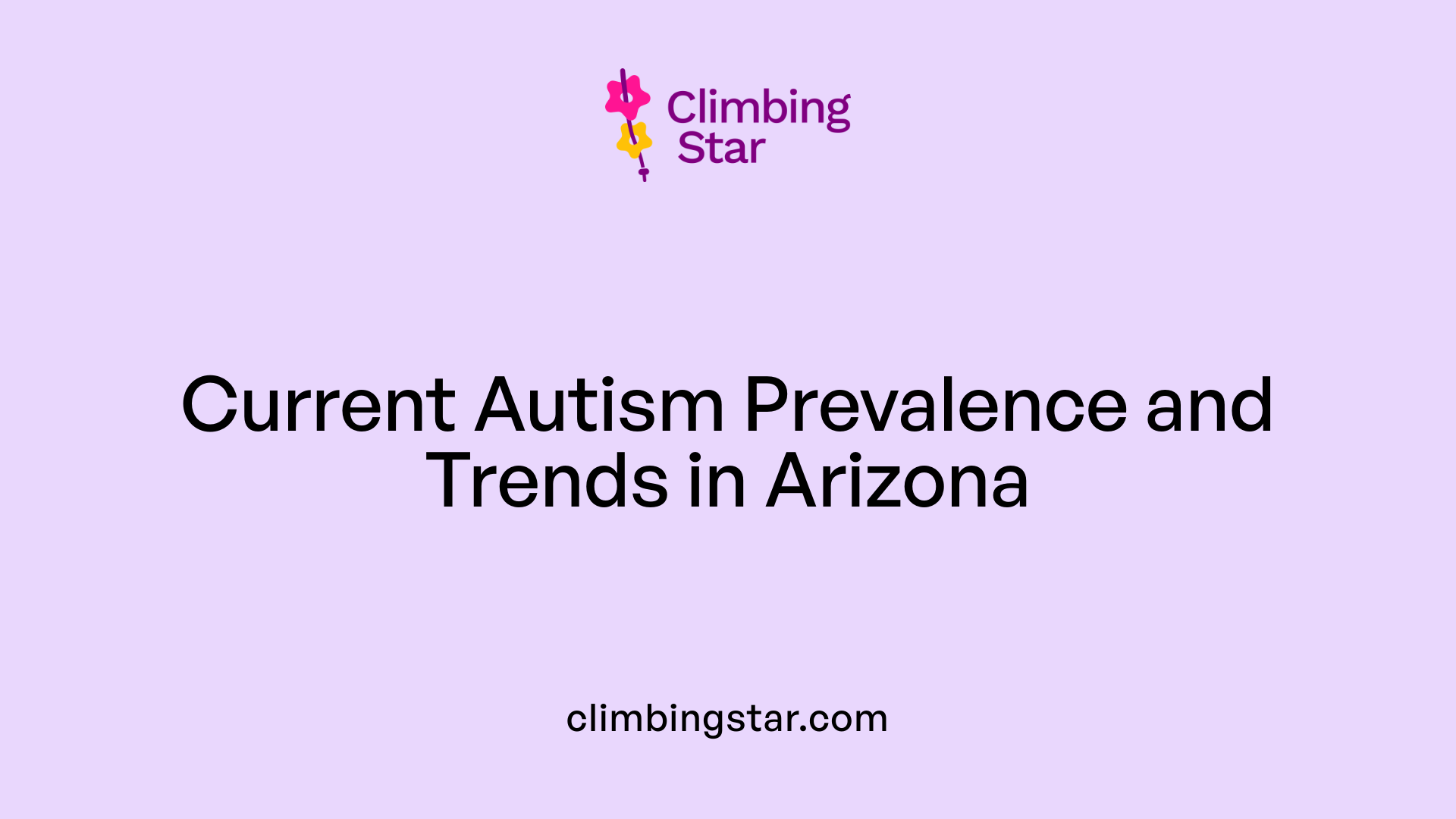
What are the current prevalence rates of autism in Arizona?
Recent data estimates that about 1 in 22 children in Arizona are diagnosed with autism spectrum disorder (ASD), corresponding to roughly 4.5%. This high rate makes Arizona one of the states with the most significant prevalence levels in the country. According to the CDC’s 2023 Autism Spectrum Disorder Monitoring Network, the prevalence in Arizona closely mirrors that of California. The Arizona Developmental Disabilities Surveillance Program reported that in 2020, approximately 2.7% (or 1 in 36) of 8-year-olds and 1.6% (or 1 in 64) of 4-year-olds received an ASD diagnosis. These figures reflect a clear upward trend that has persisted over the past few years.
How has autism prevalence changed over time in Arizona?
Over the last sixteen years, autism prevalence in Arizona has seen a dramatic increase, nearly tripling since 2000. In 2020, about 1 in 36 children were diagnosed with ASD, a significant rise that aligns with national patterns. This upward trend is influenced partly by advances in diagnostic techniques, increased public awareness, and improved reporting methods. These factors have allowed for earlier identification and more accurate diagnoses, contributing to the perception and reality of rising prevalence. The pattern of growth underlines the necessity for increased healthcare resources and targeted policies to support affected children and their families.
Regional Variations and Disparities Within Arizona
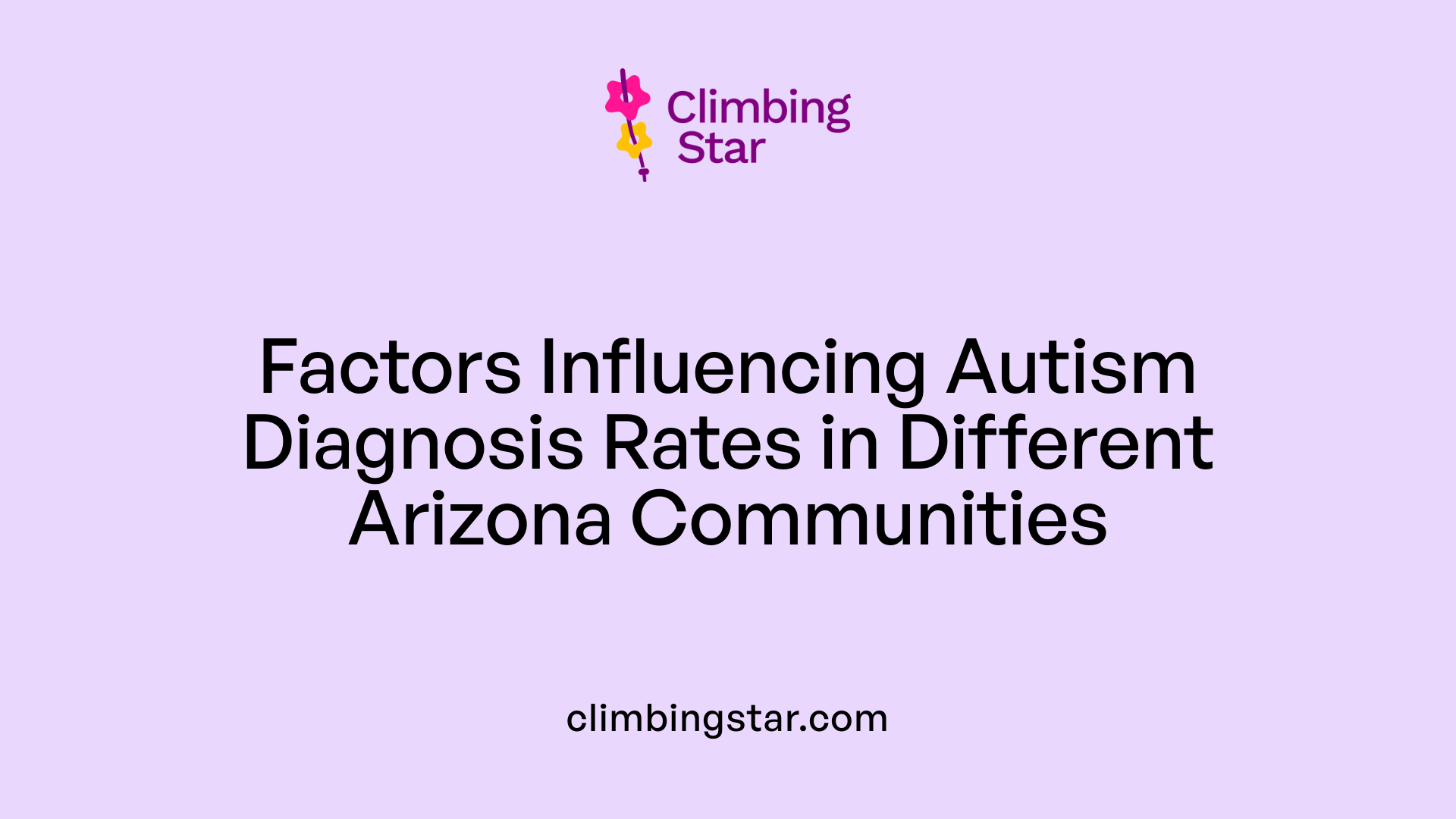
Are there regional differences in autism prevalence within Arizona?
Yes, within Arizona, significant variations exist in autism diagnosis rates across different regions. Data indicates that some communities and geographic areas report higher autism prevalence than others. These differences are often linked to factors such as socioeconomic status, access to healthcare, and community awareness about developmental disorders.
In Arizona, regions with more developed healthcare infrastructure and greater awareness tend to have higher reported rates of autism diagnosis. This pattern mirrors broader national trends, where regions like the Northeast show higher prevalence figures compared to parts of the West. Rural or underserved areas often have lower reported rates, which might not necessarily reflect an absence of autism but could be due to underdiagnosis or delays in identification.
These disparities highlight the impact of local resources and community engagement on autism detection. Ensuring equitable access to diagnostic services and increasing awareness across all regions can help provide a clearer picture of autism prevalence within the state.
What factors contribute to regional disparities in autism diagnosis?
Multiple factors influence regional differences in autism diagnosis within Arizona. Socioeconomic status plays a crucial role, as wealthier communities often have better access to healthcare and specialized services, leading to higher detection rates. Conversely, lower-income areas may face barriers like limited healthcare infrastructure, fewer specialists, and lack of awareness.
Cultural attitudes towards developmental health and autism also affect diagnosis rates. Some communities may have stigmas or misconceptions that delay seeking diagnosis or treatment. Additionally, the availability of trained professionals and diagnostic tools significantly impacts reporting accuracy. Regions with dedicated clinics and healthcare providers trained in early autism detection tend to have higher reported prevalence.
Overall, these disparities emphasize the importance of addressing healthcare inequalities, improving community outreach, and providing targeted resources to ensure all children have equitable opportunities for diagnosis and support.
Research Findings and Contributions to Understanding Autism in Arizona
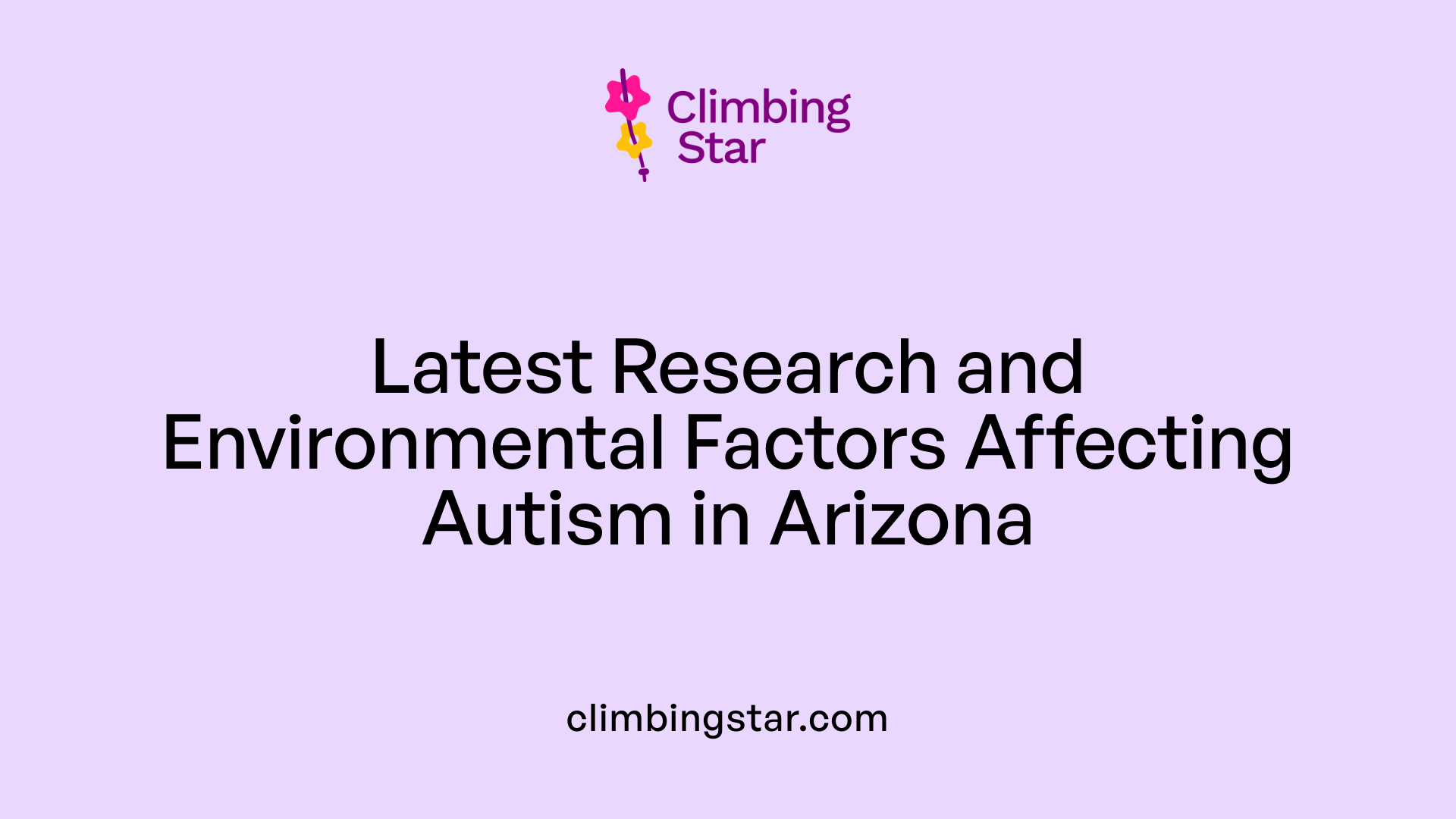
Recent studies and findings on autism prevalence and etiology
Recent research in Arizona reveals a notable increase in autism spectrum disorder (ASD) diagnoses over the past decade and a half. From 2000 to 2004, the prevalence among 8-year-old children rose by approximately 26%, although this change was not statistically significant. More recently, data show that autism rates have nearly tripled since 2000, with about one in 36 children in Arizona now diagnosed with ASD, compared to approximately one in 150 at the turn of the century.
Investigations by organizations like the CDC and the Southwest Autism Research and Resource Center (SARRC) suggest that this rise is partly due to improved detection, screening, and more inclusive reporting. However, researchers also acknowledge that true increases in ASD symptoms may be occurring, influenced by a combination of genetic and environmental factors. For instance, studies point to environmental exposures such as maternal health issues, prenatal pollutants, and parental age as potential contributors.
Further, innovative treatment approaches are emerging locally. Arizona State University is conducting Phase 2 trials of microbiota transfer therapy (MTT), which aims to address gastrointestinal symptoms linked to autism, showing promising outcomes in symptom reduction.
Disparities among minority populations, especially the Hispanic community
A significant concern is the disparity in diagnosis rates among minority groups, particularly within Arizona’s large Hispanic population. CDC reports indicate that Hispanic children are 1.6 times less likely to be diagnosed with autism compared to non-Hispanic white children. This gap is driven by barriers such as language differences, cultural perceptions, limited access to healthcare, and lack of awareness about developmental milestones.
Specifically, the prevalence of autism in Arizona’s Hispanic community increased by 144 percent according to CDC findings, yet underdiagnosis persists due to these challenges. This underdiagnosis delays early intervention, which is crucial for improving outcomes in children with ASD. Efforts are underway to improve culturally aligned screening and outreach programs, aiming to reduce disparities and ensure timely diagnosis and support.
Public Health Implications and Challenges Ahead
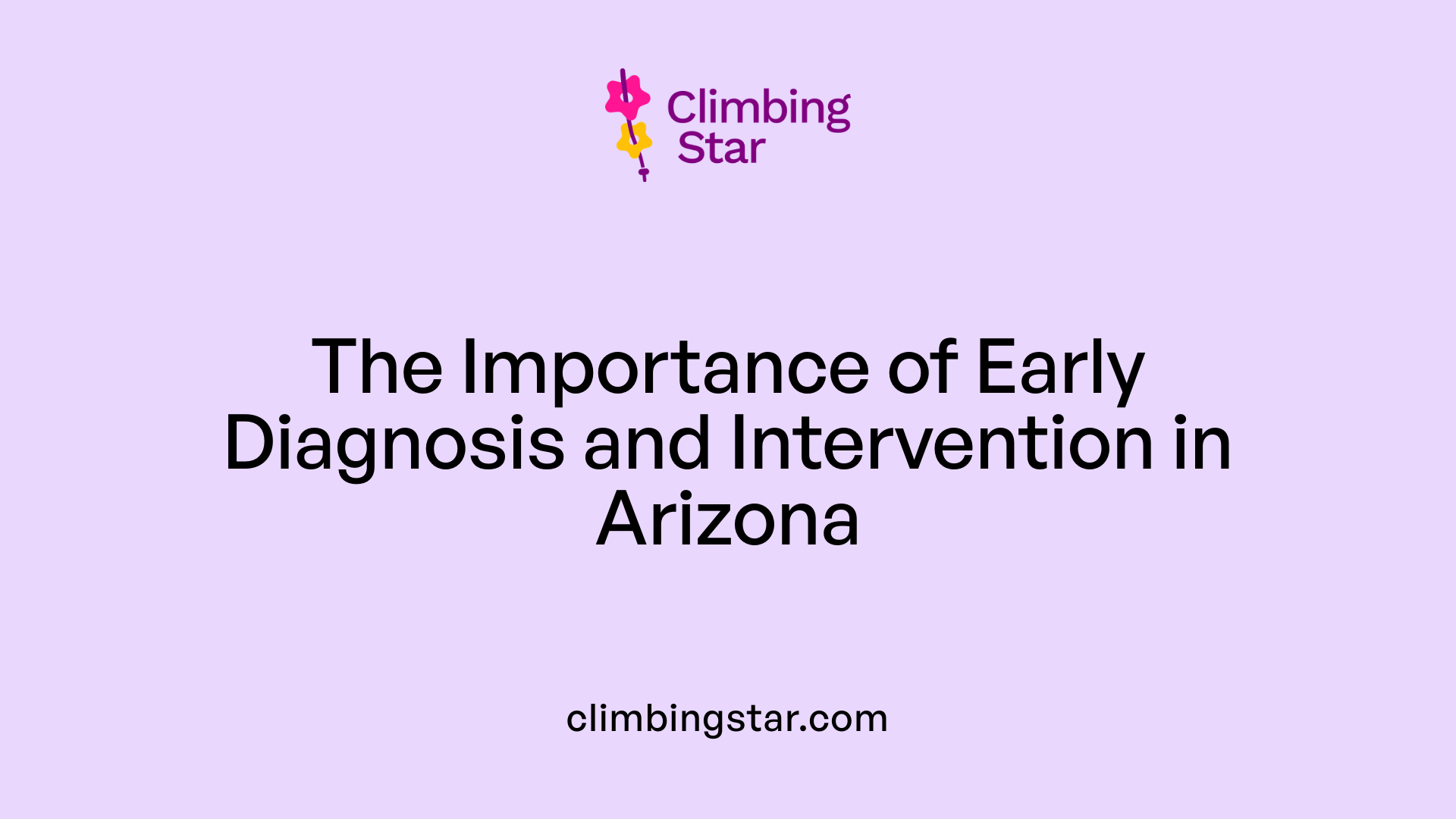
What are the public health implications of rising autism cases in Arizona?
The noticeable increase in autism spectrum disorder (ASD) prevalence in Arizona poses substantial challenges for the state's public health infrastructure. As more children are diagnosed, there is a higher demand for healthcare services, educational accommodations, and social support programs. While earlier detection of ASD is now more common, many cases still go undiagnosed or are diagnosed late, making timely intervention difficult.
Disparities among minorities, especially the Hispanic community which has experienced a 144% rise in ASD prevalence, highlight ongoing issues with access to diagnostic and support services. Environmental factors are also under review, as pollutants and pesticides may contribute to the rise. Policymakers face the complex task of integrating environmental health considerations into broader strategies to reduce potential risk factors, along with ensuring equitable service delivery for all communities.
Why is early diagnosis and intervention important?
Early detection of autism significantly improves long-term outcomes for affected children. Increasing screening efforts during routine pediatric visits and training healthcare providers to better recognize early signs are essential steps. Public awareness campaigns, especially those tailored for underserved populations like the Hispanic community, can help families recognize developmental differences sooner.
Investment in early intervention programs—such as behavioral therapies, speech and occupational therapy, and family support services—can mitigate the impact of ASD and improve developmental trajectories. The emphasis on early treatment aligns with research showing that earlier intervention leads to better social, cognitive, and adaptive skills.
How might environmental health policies influence future autism trends?
Environmental factors are increasingly recognized as potential contributors to autism risk. Policies aimed at reducing pollution, regulating pesticide use, and improving maternal health can play a vital role in lowering environmental exposures linked to neurodevelopmental disorders.
Research continues to explore how toxins impact prenatal and early childhood development. Implementing stricter environmental controls and promoting public health measures can help minimize exposure to neurotoxins. Over time, these policies may lead to a decline in ASD incidence, highlighting the importance of integrating environmental health strategies into autism prevention efforts.
Authoritative Sources and Data Collection Efforts
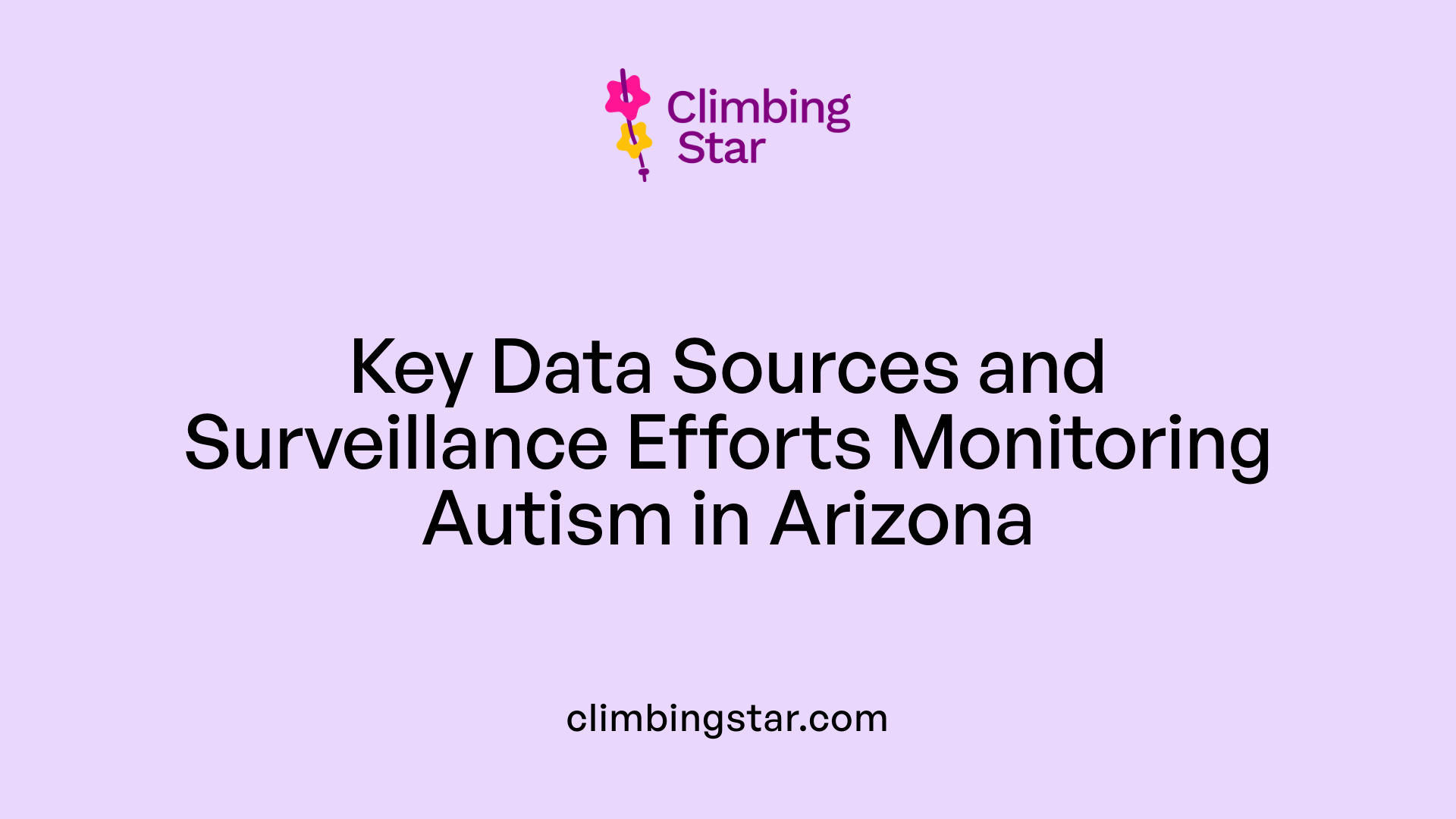 Understanding the scope and trends of autism spectrum disorder (ASD) in Arizona relies heavily on data collected by authoritative sources. The primary institutions involved include the Arizona Department of Health Services and the Centers for Disease Control and Prevention (CDC). These agencies conduct systematic surveillance and research to monitor autism prevalence across the state.
Understanding the scope and trends of autism spectrum disorder (ASD) in Arizona relies heavily on data collected by authoritative sources. The primary institutions involved include the Arizona Department of Health Services and the Centers for Disease Control and Prevention (CDC). These agencies conduct systematic surveillance and research to monitor autism prevalence across the state.
The CDC’s Autism and Developmental Disabilities Monitoring (ADDM) Network plays a crucial role in providing comprehensive, population-based data. Notably, the ADDM studies conducted in 2018 and 2020 have highlighted significant increases in autism prevalence in Arizona. For example, data from 2020 indicated that roughly 1 in 36 children in Arizona was diagnosed with ASD, a steep rise from about 1 in 150 children in 2000.
Local media sources, such as the Arizona Daily Star, also contribute by publishing reports that help raise public awareness of these trends. These reports support efforts to inform policymakers and health providers about the changing landscape of autism in the region.
Surveillance efforts like those from the CDC and state agencies are vital for shaping our understanding of autism’s growth and variation in Arizona. They facilitate the identification of at-risk populations, including the state's significant Hispanic community, which saw a 144 percent increase in autism rates according to CDC data. These efforts enable targeted public health interventions and resource planning.
Research stemming from ongoing data collection underscores the importance of early diagnosis and improved detection methods. By tracking trends over time, these efforts help evaluate the effectiveness of intervention strategies and highlight areas requiring additional attention. Overall, sustained surveillance and research enhance awareness and guide effective responses to meet the needs of Arizona’s children with ASD.
Looking Forward: Addressing Challenges and Supporting Communities
As autism prevalence continues to rise in Arizona, the need for robust, inclusive, and culturally sensitive strategies becomes ever more critical. Strengthening early diagnosis programs, expanding access to services, and implementing environmental health measures are vital steps toward mitigating the public health impact. Recognizing and addressing disparities, particularly within the Hispanic community, can help ensure equitable care for all children. Ongoing research, surveillance, and community engagement will be the cornerstones of a comprehensive response to Arizona’s emerging autism landscape, fostering a future where affected children and their families receive the support they need.
References
- Changes in autism spectrum disorder prevalence in 4 ...
- Autism rates increase in U.S. and AZ
- Autism in Children in Arizona's Hispanic Community ...
- Autism rates increase in U.S. and AZ
- New CDC Report Shows Increase in Autism in 2022 with ...
- Phoenix mom calls for more autism research following ...
- Autism/Asperger's Research Program: Home
- Autism Disparities in Arizona Spark New Research
- Hispanic children less often diagnosed with autism, CDC says







